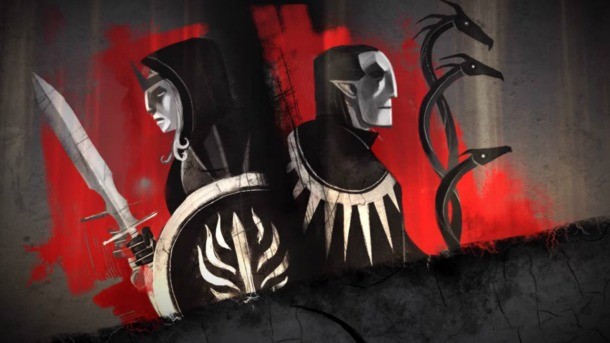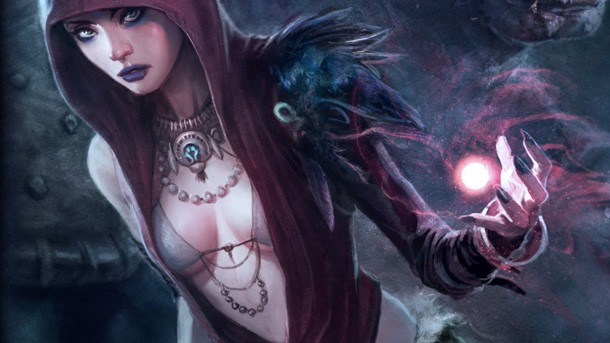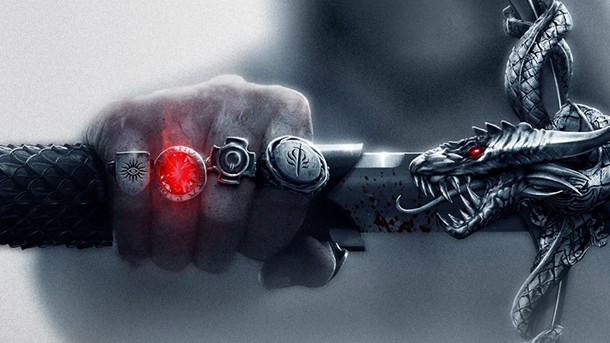Building A Dragon Age Rivalry: Mages Versus Templars

Many narratives thrive off their rivalries, and Dragon Age is no different. Tensions between the Templars and mages reached a new level with an all-out battle in Dragon Age II, with Hawke having to pick a side. Dragon Age: Inquisition throws you right into the aftermath, and the two groups are still at odds.
Finding The Catalyst

What if magic actually existed in our world? So many fantastical settings immerse themselves in the supernatural property, but few touch on how odd it would be to have people walking around with powers. When the Dragon Age team sat down, it was something they couldn’t ignore.
The conversation started off lighthearted as the group quickly recalled the Dungeons & Dragons spell “charm person,” which allows you to make someone your friend until the spell expires. The spell sparked some telling questions. “What if you met a mage and you could never be sure you [actually] like them?” asks lead writer David Gaider. “Do [you] like them because they cast a spell on [you]?”
As the team talked, they focused on the paranoia that would come with a world where people possessed magical powers and how that would be an interesting story to tell. “You always have to have in the back of your mind, ‘What if this person had powers?’ What kind of suspicions would that breed? That’s where it eventually led to the Circle of Magi and the kind of the controls it would require,” Gaider recalls.
The controls BioWare decided on brought an abundance of tension to the Dragon Age world. By involving the Chantry, the prevailing religion of Thedas, in governing the Circle of Magi, it not only gave the vocal group additional power, but also let the Chantry spread and act on its message about the dangers of magic. For those who need a refresher, the Circle of Magi teaches mages how to control their powers. Chantry law dictates that anyone who gains powers must join the nearest circle and be monitored. Part of the monitoring comes from the Templars, who are the watchdogs for mages and the Circle, and hunt down the apostates who refuse to join.
According to Gaider, Dragon Age: Origins was about setting up this dilemma. As the team moved on to Dragon Age II, the focus shifted; “Then it was, ‘What would it take for that to come crashing down?’” Gaider recalls. As we all know, peace and order are constantly challenged...and maybe the mages are tired of being looked at as outcasts.
Choosing Sides

As seen throughout our own history, all it takes is one dominant group to forecast something as a threat and people will follow. Dragon Age’s asset is its two viewpoints people can relate to, and it set the stage for a tense rivalry fans latched onto and passionately defended on message board forums. In fact, even within BioWare’s own staff, team members disagree about who’s in the right.
On the one hand, the Chantry and Templars have a reasonable fear: Magic in evil or incompetent hands could be diabolical for society. For mages, this presumption of guilt is disheartening. “What would it feel like to have it assumed that you’re a time bomb waiting to go off?” Gaider asks. “Should I not be judged for the things that I do, not the things that I may do?”
These two disparate concepts drove players to think about magic in greater complexity. “It just seemed like such a juicy argument to dive into,” Gaider says. “Dragon Age has always been about hard decisions, where there’s not necessarily a clear moral path. But the idea is that if we can successfully argue either side of an issue and not feel like a sociopath doing so, then that is a good avenue for us to explore.”
In Dragon Age II, BioWare deliberately presented both groups at their worst, as creative director Mike Laidlaw puts it, “kind of accelerating or turning the volume up on each of their extremisms.” Instead of letting you watch, the game ended with you finally voicing support for one group or the other. “I think by letting the player put a stake in the ground with Hawke as your avatar was something that we needed to do, having been presented the increasingly loud evidence,” Laidlaw says.
“Dragon Age II is always about Hawke being drawn into events perhaps outside of his or her control, and we wanted to give the player the opportunity to see the conflicts start,” Gaider adds. “I think that was more at the heart of it than the player actually deciding, because it’s too large of an issue to resolve in a snap.”
Up Next: Find out where the war is headed in Dragon Age: Inquisition...
The Continuing Battle In Dragon Age: Inquisition

The start of Dragon Age: Inquisition has the Chantry, Templars, and mages assessing the aftermath. The mages have declared their independence from the Chantry, allowing them to break away from the Chantry-controlled Circle. The Templars want to hunt down the mages, fearful of what they’ll do without control. But the Chantry, just as fearful, thinks it’s best to make peace. The Templars, enraged that the Chantry doesn’t see it their way, decide to split off. “Basically, you have a situation where the Templars are hunting mages in the streets,” Gaider says. “That’s not everything that Inquisition is about, but that’s where it begins. The world’s kind of falling apart.”
Entering Inquisition, tensions are higher than ever before, and no one is safe. Those who read Dragon Age: Asunder, a book that details some of the aftermath three years after the Mage-Templar war, already know of some of the chaos. “We struck down the mechanisms that would normally keep these things in check. Even the governments like Orlais are in a state of civil war that was established at the end of Asunder. So even there, the most powerful empire in the world is not in a position to intervene in these events either, so that just all plays into the state of the world at the beginning of Inquisition. We set up all our ducks in a row,” Gaider says.
This time around, it’s not about extreme viewpoints, though. You’ve seen both groups at their worst; now it’s time to see the other side. “I think a big part of Dragon Age II was letting the player see the people who thought that things were bad by these extremists,” Gaider says. “And now in Dragon Age: Inquisition we want to show the player the people who feel that they’re right. That they’re on the side of good, not from the side of, ‘I am an extremist who has this view that might be hard to understand,’ [but] more, ‘This is why my position is morally correct.’” This also extends to seeing characters approach these views differently.
As many recall, Cassandra, a seeker of the Chantry, interrogated Varric about Hawke in an attempt to prevent war. “You will find out more as to why,” Gaider teases. “She wasn’t just investigating; there was more behind what she was doing. You find that out as the Inquisition comes around.”

Both Cassandra and Varric have been confirmed as party members, but we didn’t get to know much about Cassandra in Dragon Age II beyond her mission. This will change in Inquisition. “To some degree, I think that Cassandra undergoes probably the biggest transformative arc of any character in Dragon Age II,” Laidlaw says. Cassandra has always supported the Chantry, but after talking to Varric and seeing both sides of the issue, her opinions may change. “In a lot of ways, I think she represents the opportunity to grow by understanding [and not] getting increasingly lost in the noise of Dragon Age’s rising chaos,” Laidlaw says.
Another character who may be set to re-enter the Dragon Age ring? The redheaded, religious bard Leliana. “We’ve been building Leliana up to essentially act as an agent to the divine,” Laidlaw says. “I think it would be fair to expect that she might have some say, especially given her appearance at the end of Dragon Age II. But beyond that, mum’s the word.” Leliana has always represented faith and spirituality, often testing belief and being a way to question players about how they feel about the Maker. “As far as I can tell, if you look among our fans, people have a lot of strong opinions on [the Maker],” Gaider says. “It’s a good place to go.”
The power is in your hands to bring peace back into the world as the Inquisitor. “We’ve always wanted to ask the question, ‘what if you could found the Jedi Order instead of becoming a Jedi?’” Laidlaw says. The space has been made for the Inquisitor to step in and shape the world as you wish. “If [you’re] going to start something, what would it be? What would you make that you would want to be a part of?” Gaider asks, setting up the questions BioWare wants players to explore as the Inquisitor.
Inquisition takes players into darker pastures as alongside the warring groups, a new threat emerges: a tear opens up in the world and demons are pouring out. The questions are bound to get more complicated, and BioWare has put a lot of thought into your role as the Inquisitor. “Making the decision harder is stopping and thinking, ‘What is the right outcome? What do I want out of this problem? What do I need to have happen?’” Gaider says. “For some players that’s very simple, but if you can have an argument about it, that makes it Dragon Age.”

Get the Game Informer Print Edition!
Explore your favorite games in premium print format, delivered to your door.
- 10 issues per year
- Only $4.80 per issue
- Full digital magazine archive access
- Since 1991









